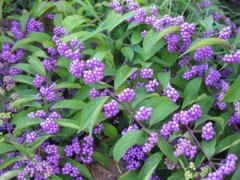Basil variety napoletano introduces how to plant basil variety napoletano to propagate quickly
Whether it's a richly seasoned tomato sauce or a perfectly made pesto made from scratch, basil is a versatile, delicious fresh herb. Combined with its growing habits, it's easy to understand why this delicious plant is a favorite of many home gardeners. While the flavors offered by many basil varieties can vary widely, some growers prefer the intense flavors of more traditional basil types.
One basil, Napoletano, is prized for its spicy taste and large green leaves. What is Napoletano Basil? Napoletano basil is thought to have originated in Italy and is a light green leaf. Commonly known as lettuce leaf basil or large leaf basil, the size and branching habits of this plant make it an excellent choice for cooking purposes. The lush vegetation also adds fragrance and visual appeal to the garden.
Growing Napoletano basil is like growing any other type of basil, Napoletano is fairly easy to grow in the garden. Although Napoletano basil plants can be found for sale in local nurseries or online, many growers prefer to grow the plant from seed. Doing so will ensure that abundant plants are available at reasonable cost. When choosing to plant basil from seed, gardeners have a number of options. While many people may choose to use seed trays and planting lights indoors to start basil seeds, most gardeners choose to sow seeds directly into the garden after all possibilities of frost.
To induce the mother plant, simply plant the seed into a well-restored weed garden bed and water. Press seeds gently into soil at recommended intervals according to seed packaging instructions. Seedlings should emerge within 7-10 days after planting. Once established, growers can begin picking basil leaves in as little as 10 weeks. To harvest basil, small stems are cut from plants. Since basil is a "cut" plant, frequent harvesting of basil leaves will prompt the plant to produce more leaves and prevent the plant from entering seeds. When harvesting, do not remove more than 1/4 of the plants at a time. This will help ensure healthy and sustained growth throughout the season.

- Prev

How to grow purple pearl grass? How do you cut down the grass every year?
Callicarpa americana shrubs (USDA regions 7 to 11) bloom in late summer, and although the flowers are not seen in abundance, the gem-like purple or white berries dazzle. Autumn leaves are charming yellow or yellowish green. These 3-to 8-foot bushes are at the border
- Next

What is the nursing knowledge of Anthurium andraeanum? How to nurse Anthurium andraeanum? how to blossom and how to care?
Anthurium andraeanum plants are grown as indoor plants in cooler areas and as landscaping plants in USDA districts 10 or higher. As long as you provide plants with some key elements, you can easily take proper care of Anthurium andraeanum. Keep reading.
Related
- A course of planting techniques and methods on how to grow carrots
- How to plant the latest tulips?
- Is it better to pick tea in the morning or in the afternoon? When is the best time for tea to be picked? what is the third or fifth tea?
- Launch Yuanxiao Happy combination Haocha + Tea Yuan healthy Taste
- Penghu Tourism "Fireworks 20 Parade with You"
- 2022 West Lake Happiness holds "Digital Revitalization Voucher" and draws iphone13 and laptop.
- Banqiao Fuzhou social houses are designed to change start-up combined with police elimination to create a safe and livable environment
- The convenient measure of "mechanical weeding" in Xinbei has been abused and the Agriculture Bureau has imposed heavy penalties on the illegal land consolidation.
- Changgeng University Joins Hands with Four Memory Factories to Rescue Memory Talent Shortage
- The list of Taiwan's top 100 MVP managers is listed by the Director-General of the Farmers' Association of Sanxia District.

